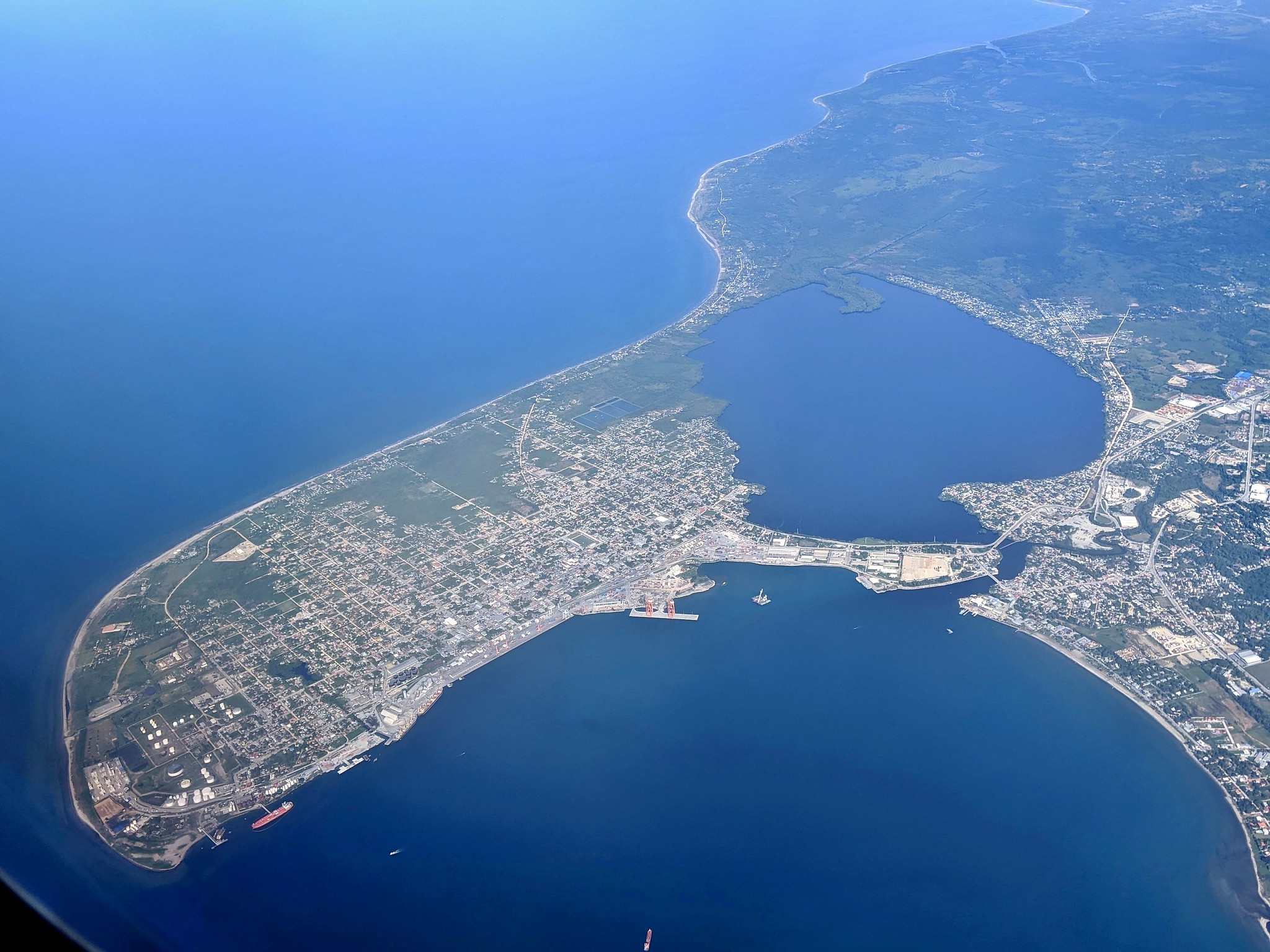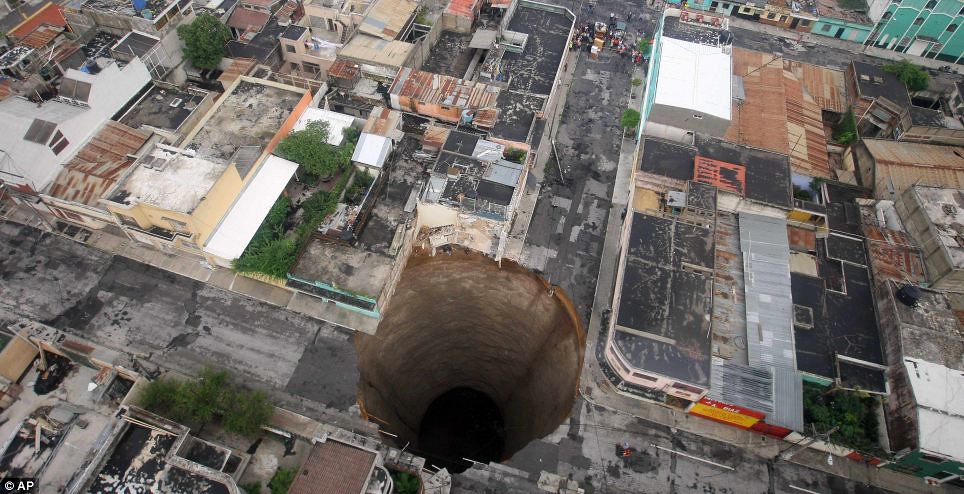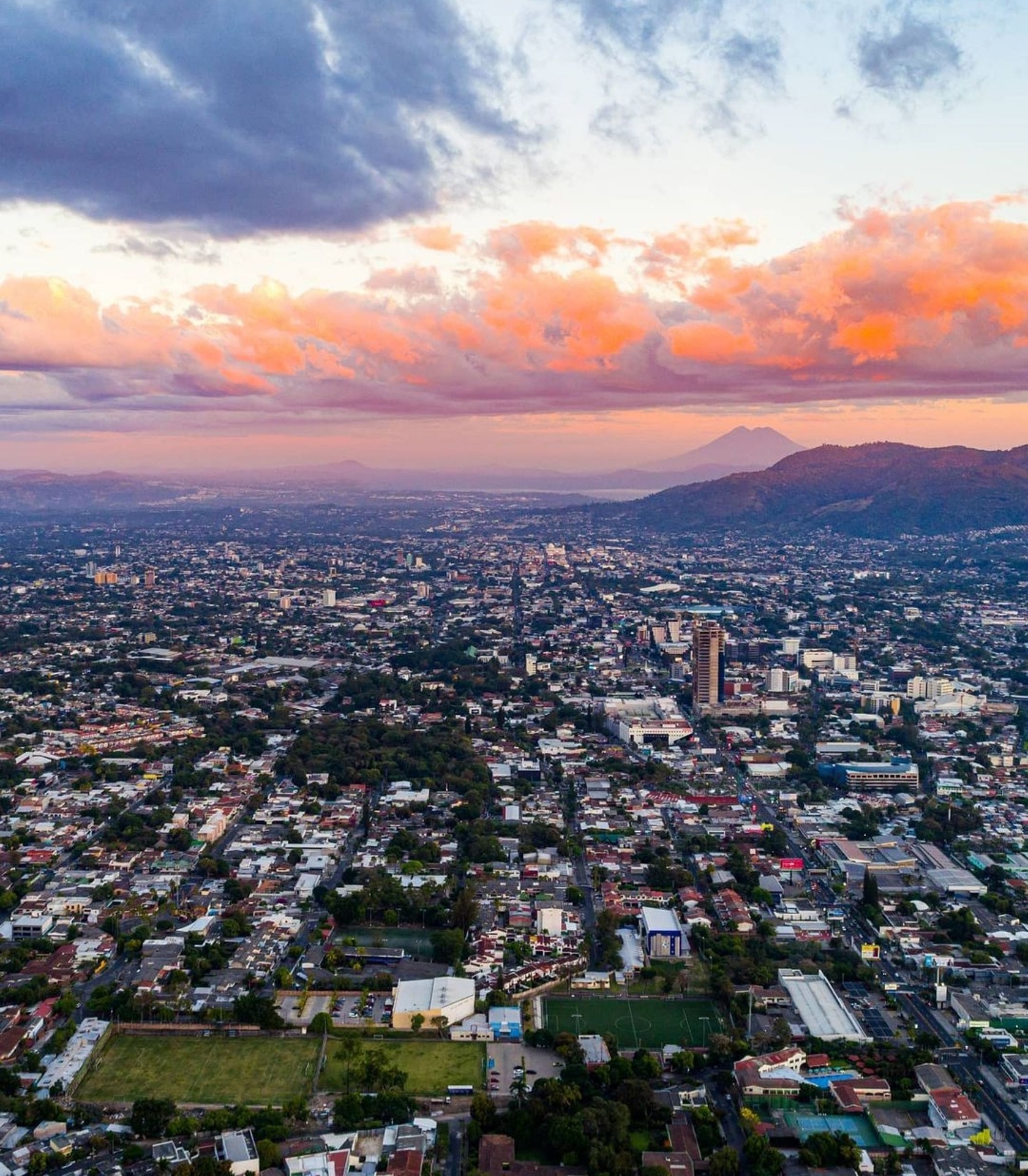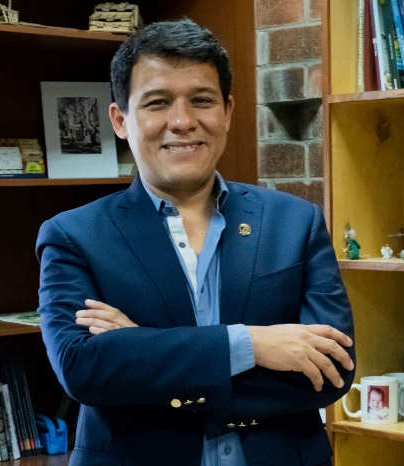Planning in Central America in the 21st century: Possibilities and limitations for resilience implementation
10 min read
Guest author: Carlos Ferrufino (Universidad Centroamericana - UCA)
Editors' note: This post is a short paper that was submitted to the URNet conference ‘Reframing Urban Resilience and Implementation’ held in Barcelona in the winter of 2018.
In the last 15 years, the Central American countries: Guatemala, Honduras, El Salvador, Nicaragua and Costa Rica have gone through major changes in their territorial planning frameworks. Sustainability has become part of day-to-day discussions at different planning levels: multinational, national, metropolitan, and local. The approval of a National Territorial Planning Law in Honduras in 2003; National Development Plans with specific territorial and urban development goals in Guatemala, Costa Rica, and El Salvador; Metropolitan Plans in San José (2013), San Salvador (2016), and the Guatemala City Plan (2008) constitute landmarks in this new phase of planning practice in the region. Moreover, a new layer of planning activity related to the multinational scale has emerged as the Central American Integration System (SICA) has approved different regional agendas and policies, such as: the Central American Spatial Planning Agenda (2007); the Housing and Human Settlements Strategy (2008); the Rural Territorial Development Strategy (2010); and the Comprehensive Risk Management Central American Policy (2013). This work intends to explore the way in which these planning experiences have addressed the issues of sustainability, resilience, and governance through five case studies to identify common trends, opportunities, and limitations for the effective achievement of sustainable development goals through planning.
1. Regional trends and case studies
Several trends characterize planning processes and policies in Central America in the 21st century. Neo-liberal structural reforms in the last two decades of the past century eliminated traditional planning institutions in all Central American countries except Costa Rica. Nonetheless, major natural disasters that affected the region as hurricane Mitch (1998) and El Salvador´s earthquake (2001), and international environmental agendas like the Rio Earth Summit (1992) and the Kyoto Protocol (1997), propelled a new phase of planning practice, including the creation of Environment Ministries. Table 1 shows a brief compendium of the multiple planning experiences occurring in the region in the last 15 years and the diversity of approved planning instruments.
Table 1 - Major planning instruments in Central America (2003-2016)
Source: compiled by the author, from various sources
This enables to identify three common trends: 1/ the existence of strategic national scale development plans, policies, and laws; 2/ a continuous interest in metropolitan planning, particularly for national capital cities; 3/ the emergence of national guidelines for planning at the local level.
This paper draws upon five planning experiences to discuss how specific plans in Central America incorporate sustainability, resilience, and governance principles. Cases choice consider: scale, responsible agents, and invested resources. Case studies are: 1/ El Salvador´s Quinquennial Development Plan (PQD 2014-2019); 2/ the Grand Metropolitan Area Plan of San José (Plan GAM) in Costa Rica (2013); 3/ Territorial Development Plan of the Metropolitan Area of San Salvador (PDT-AMSS, 2016); 4/ Guatemala City Territorial Plan (POT, 2008); and 5/ Municipal Development Plan of Puerto Cortés (PDM-OT, 2013) in Honduras. The study conceptualizes the planning field following Pierre Bourdieu´s structural constructivism categories and is particularly interested in understanding how agents operate in terms of relationships, rules, and resources. Cases have permitted us to identify at least four tensions concerning resilience implementation, planning, and governance.
Location of the national plans, policies and laws analysed in the paper
2. Tensions between territorial planning and economic development strategies
Despite the variety of planning instruments and official discourse numerous contradictions and gaps persist between territorial plans and economic development strategies. Central American countries in the 21st century are still eager to attract foreign investment. During the 1990s this was done through export processing zones (EPZ). In the last five years, Honduras and El Salvador have proposed new strategies including Charter Cities and Special Economic Zones larger in size and administrative autonomy than their predecessors and with higher potential impact both in terms of natural resources control and territorial coherence. It is notable that none of these cities or regions had been previously identified in national development plans such as El Salvador’s PQD as investment promotion agencies seem to escape from traditional territorial planning regulations.
Large infrastructure projects are also an expression of economic development strategies in the context of increasing flows of merchandises. However, none of the studied cases integrated highway construction, ports or airport expansion into their spatial schemes. Puerto Cortés’ PDM-OT is an emblematic example of such contradiction as it is the largest port city of Honduras, but the transnational Port Corporation did not participate in the plan. Probably the largest infrastructure initiative in the region in the last decade is Nicaragua´s Great Interoceanic Canal. Nonetheless, this project was prepared without being integrated into a national planning scheme and has widely been criticized for its potential environmental impacts over water resources. It appears that the economic development goal of sustainable development is still treated in Central America as an independent realm with no spatial expression or impact over the territory.
3. Traditional planning institutions and the challenges of metropolitan areas
Even though Central America is still the least urbanized region in Latin America, one-quarter of its 40 million inhabitants live in the metropolitan areas of its five capital cities. These cities, founded in colonial times next to volcanoes, rivers, lakes, and mountain ranges, have been recurrently damaged by earthquakes, flooding, and landslides. Since the second half of the 20th century rational urban development plans intended to orientate urban growth and protect sensitive environmental areas, with little consequences.
In the last decade, all capital cities in Central America have gone through a new phase of urban or metropolitan development plans. However, the metropolitan space still poses numerous challenges in terms of planning strategies and governance arrangements. Traditional technocratic planning structures persist. It was the case for the Grand Metropolitan Area (GAM) of San José Plan, partially financed by the European Union, which was not approved despite being the most onerous planning exercise in Central America in this century. The national government, through the Ministry of Housing and international consultants, elaborated the GAM plan with little involvement of metropolitan municipalities and environmental agencies. Five years after being finished, the plan is at the centre of a judiciary dispute related to environmental concerns over proposed urban expansion boundaries. In Guatemala City, the municipality was capable to prepare, approve, and implement its Territorial Plan (POT, 2008) based on neo-urbanism principles though restrained to its administrative limits, with little consideration over metropolitan and environmental issues and national urban development policies. Probably the most sophisticated experience in terms of addressing the metropolitan scale is the PDT-AMSS in San Salvador (2016) prepared by the Metropolitan Planning Office (OPAMSS) and its Council of Mayors (COAMSS) with financial support from the European Union. Nonetheless, this exercise resulted from 25 years of metropolitan planning experience after previous failed proposals prepared by national government ministries.
In synthesis, in Central America, traditional planning institutions based on national urban development or housing ministries, as well as purely local initiatives, appear to be insufficient to tackle the metropolis. New governance practices and agreements appear to be necessary to address complex urban processes within metropolitan spaces, including urban expansion and risk management.
4. International planning paradigms and elementary planning systems
In the last years, all Central American countries, except Nicaragua, have signed and approved diverse international agendas and agreements like Paris Agreement on Climate Change (2015) and the United Nations Sustainable Development Goals (SDGs, 2015). These goals are related to gender equality, human rights, climate action, and social participation. In the framework of the Economic Commission for Latin America and the Caribbean (ECLAC), countries have agreed to strengthen their national planning systems to facilitate the achievement of these international agreements.
Regional planning barometers and guidelines have stressed the need to create new organizations and provide strong political support to national development planning. In the last decade, Planning Secretaries attached to the Presidency were created in Guatemala and El Salvador and are responsible for coordinating sectorial ministries and prepare national development plans. In Costa Rica, a more traditional Economic Development and Planning Ministry (MIDEPLAN) has assumed this function since the 1970s. Still, Honduras and Nicaragua have not created this sort of institutional apparatus reflecting the persistence of liberal and sectorial approaches.
Newly created organizations are expected to integrate physical, economic, environmental, and development planning, as well as social policies and public investment according to holistic planning paradigms. However, institutional gaps, overlaps, and conflicts persist over the system’s governance. In the case of the Quinquennial Development Plan in El Salvador (PQD 2014-2019) Planning Secretary has had to negotiate with other ministries and municipalities to put into place the National Development and Planning Council (CNODT) as the main responsible for territorial planning at the national level. In 2014 Costa Rica’s new administration established an Environment, Energy and Territorial Planning sector organized by the Ministry of Energy and the Environment to coordinate public agencies related to territorial issues, despite reluctance from the Housing Ministry previously in charge of this area. These arrangements tend to be fragile as they are not based on comprehensive laws but more on executive orders subject to be changed by each administration. Systems tend to lack effective governance as they are still not consolidated. Moreover, these emergent planning systems have not yet addressed certain crucial matters in the region, such as indigenous people rights and the limitations imposed by conservative legal frameworks concerning key environmental resources like land and water.
5. Stakeholder participation and planning process governance
Global Sustainable Development Goals call to strengthen alliances between national and local governments, the private sector, and grassroots organizations. These include the importance of international cooperation and capability creation in less developed countries. SDGs stress the importance of shared principles and values through participation.
All plans studied in Central America acknowledge the importance of participatory planning processes involving public, private, and civil society stakeholders. However, participation is implemented in various manners. Plan GAM (2013) included a series of bilateral meetings between planners and stakeholders, such as Costa Rica’s Construction Chamber, professional associations, and organized neighbours. Notably, both neighbours and professionals challenged the plan in courts with the support of private developers. POT Guatemala (2008) went a step ahead of informative meetings as it previewed that neighbourhood plans and the issuing of critical building permits required mandatory involvement of organized communities, though this is still a controversial topic around plan implementation. Puerto Cortés’s PDM-OT resulted in a local ordinance that created the Municipal Planning Council with the participation of the private sector, civil society organizations, and key national government agencies. The PQD 2014-2019 in El Salvador underlines its participatory approach through nearly 200 consultation meetings with more than 4,300 participants. The plan also proposed the creation of a permanent Civic Consultation Council to assess and monitor its implementation. Finally, in the case of PDT-AMSS, the Metropolitan Planning Office shared the responsibility to prepare the plan with two civil society organizations: Guillermo Ungo Foundation, a local think-tank interested in public policy, and the Central American University, as an academic partner.
Three questions arise from these Central American cases. First, it is notoriously difficult to integrate national and local levels of government into the planning process as municipalities and ministries are not eager to lose, or share, political leadership over the territory. Second, different participation mechanisms have been implemented, including meetings and permanent councils with varied results: from conflict, in San José, to reluctance in Guatemala, and apparent cooperation in El Salvador. Finally, Central American cases draw attention to the relevance of international cooperation agencies for planning processes, particularly the European Union.

Puerto Cortés, Honduras (2019). Credit: zugg55 on flickr (https://www.flickr.com/photos/67165210@N00/4659260347)

Enormous sink hole in Guatemala City provoked by tropical storm Agatha, causing the collapse of a three-storey building (2010). Credit: horsplips5 on flickr (https://www.flickr.com/photos/67165210@N00/4659260347)

San Salvador (2020). Credit: Manuel Miranda on Pixabay (https://pixabay.com/es/photos/el-salvador-ciudad-5979701/)
6. Conclusions and further study
The study of territorial and urban development plans in Central America in the last 15 years reveals a broad and vigorous experience associated with resilience, governance, and sustainability. Numerous instruments at the national, metropolitan, and local levels confirm that planning is still well alive in the region despite the 1990s structural adjustment. However, at least four tensions appear to characterize the relationship between planning, sustainable development, and resilience in Central America. First, there are frequent difficulties in coordinating national comprehensive development plans with economic development strategies, generally focused on foreign investment attraction and infrastructure expansion. Second, metropolitan areas pose a challenge for traditional planning organizations in terms of tackling growth and promoting resilience in the context of multiple climatic and geologic hazards. Third, emerging national planning systems face numerous obstacles in addressing holistic global development agendas because of institutional gaps and overlaps, fragile governance, and the persistence of traditional legal frameworks. Fourth, there are multiple interpretations on how planning should encompass participation and promote active involvement of the private sector and civil society to achieve sustainability. These issues raise questions about: the effectiveness of cooperation between local and national levels of government, the creation of new permanent bodies or councils where grassroots organizations and entrepreneurs are requested to participate, and the possibility of shared leaderships to guide the planning process.
Finally, the study of territorial and urban development planning experiences in Central America in the 21st century opens the space to further discuss three relevant issues for planning theory and practice. First, research brings new evidence on the relationships, strategies, and resources of multiple planning agents, including: professionals, decision-makers, communities, and the private sector. Second, the study provides an opportunity to conceptualize the role of international agents, and planning ideas, in the configuration of the planning field in developing countries. Finally, cases permit a better understanding of the planning field as an arena of dispute over space, key natural resources, and ideas.
Acknowledgments
The author acknowledges Drs. Lily Caballero (Honduras) and Andrew Cummings (El Salvador) and the Central American University for their support.
Conflict of Interest
The author declares no conflict of interest
Biography
Carlos Ferrufino is an architect, urban planner and holds a PhD in social sciences. He is a professor at Universidad Centroamericana (UCA) in El Salvador where he teaches urban planning & history, housing policy, and urban design. His research focuses in urban planning processes and land-use policy in El Salvador and Central America.
When you subscribe to the blog, we will send you an e-mail when there are new updates on the site so you wouldn't miss them.




Comments 1
[…] planning, have an increased amount of articles on those contexts (as we already had recently on contemporary planning in Central America), and help build the conceptual bridges between the practices and theory emerging from the south […]